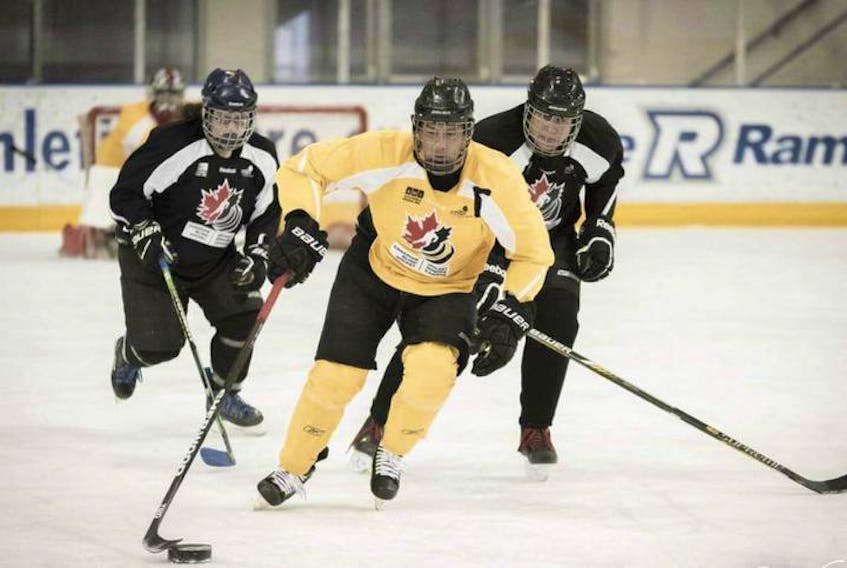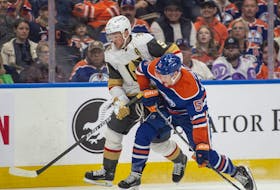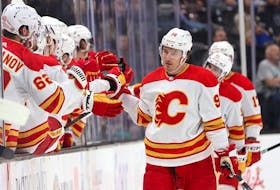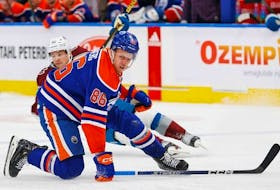When Kelly Serbu was in his late teens and early 20s, he enjoyed a life most young men would envy.
He was a prominent player with a Halifax junior A hockey team that was headed to the 1992 national championship Centennial Cup. He was performing just as impressively in the classroom at Saint Mary’s — on track for his goal to attend law school at Dalhousie.
What many people didn’t realize at that time was that he was accomplishing all this with a huge black cloud over his head.
Serbu had been diagnosed in 1991 with Stargardt macular dystrophy.
According to the Canadian Foundations Fighting Blindness website: “Stargardt macular dystrophy is an inherited eye disorder, where people experience a progressive blurring of their central vision. Vision loss often begins in the teenage years. Approximately one in 10,000 Canadians has Stargardt disease.”
Serbu talked about the disease and the early changes it brought to his life in a 1993 interview with The Chronicle Herald.
“Directly looking at something, it gets blurry and I have to look away. If I look out of the corner of my eye, using more my peripheral vision than my central vision, I can usually see better.”
And when playing competitive hockey?
“A lot of times when the puck went in the air, I couldn’t see the puck but I knew exactly where it was going just by watching the players and seeing where another player was looking.”
Serbu had to stop driving a car. He needed a special computer with large type for reading. Fortunately, the Canadian National Institute for the Blind supplied that. He fit the requirements to be considered legally blind.
But he didn’t slow down.
Fast forward a few decades from the day he was diagnosed and it’s obvious he’s still the same hard-driving guy.
He earned his law degree from Dalhousie and two years ago he received the prestigious Queens Counsel designation. He worked for several years with the Indian Residential Schools Adjudication Society as an adjudicator. He divides his time between his Halifax practice and legal work on the road.
There’s no cure for his medical condition. Fortunately for him, it has stayed much the same over the years.
He’s still playing sighted hockey at age 47 and is now four years into what’s called blind hockey.
This Friday to Sunday he skates in Pittsburgh as the captain of the Canadian team that’s scheduled to play in the first Blind Hockey Series against an American squad.
“They are still grassroots, they are still trying to grow it,” he said of those behind the sport and of attempts to build it with club teams in most major Canadian cities. Extra exposure from the international series could help with that effort.
As he’s familiarized himself with the sport’s development across Canada and learned more of the nuances of the game, Serbu has become increasingly more attracted to blind hockey.
There’s been plenty to learn.
There are a series of rules designed to create parity. The puck, which can be tracked by the sound it makes, is larger and slower than the typical hockey puck. The nets are the usual width but only three feet high. All goalies wear blindfolds under their masks to ensure none can see. They rely on other senses and verbal help from teammates to locate the puck and anticipate shots.
Also, players have to make a particular number of passes on a rush, preventing a better-sighted player from dominating. Players are rated by their level of blindness, as indicated by the colour of helmets, ensuring the two sides have parity on the ice at all times.
“It was a bit weird at first,” Serbu said. He had to learn about each teammates’ level of blindness and what they could and couldn’t see on the ice.
“But there is definitely more teamwork to it (than regular hockey).”
Don’t think because the players are visually impaired that the intensity is less than usual.
“I would skate down the ice and there’d be guys that would know I was going by them. And they’d be sticking you and cross-checking you. In my second tournament, every time I would touch the puck someone would stick me or cross-check me. I think I got six penalties (for retaliation) in one game.”
Though he still plays regular hockey at times, he’ developed a special appreciation for the challenges that come with blind hockey. He believes the creation of the national program is the way to go toward promoting more international play and eventually gaining a berth in the Paralympics.
While the goal of growing blind hockey has become important for Serbu, he says it’ not so much about him and other veterans getting to prolong their careers.
It’ more about what it represents for younger players, such as fellow Nova Scotia teammate and teenager Alex Angus MacEachern of Mabou, who have overcome shared hurdles to participate.
He wants to ensure that young athletes, those often too easily left out, get the opportunity to play the game.
“You talk to younger kids about your experiences, ‘that I was once where you are now,’” he said of the conversations that take place in every sport, but may be more important in blind hockey.
“The national program, for me, is so kids have something to look up to.”









